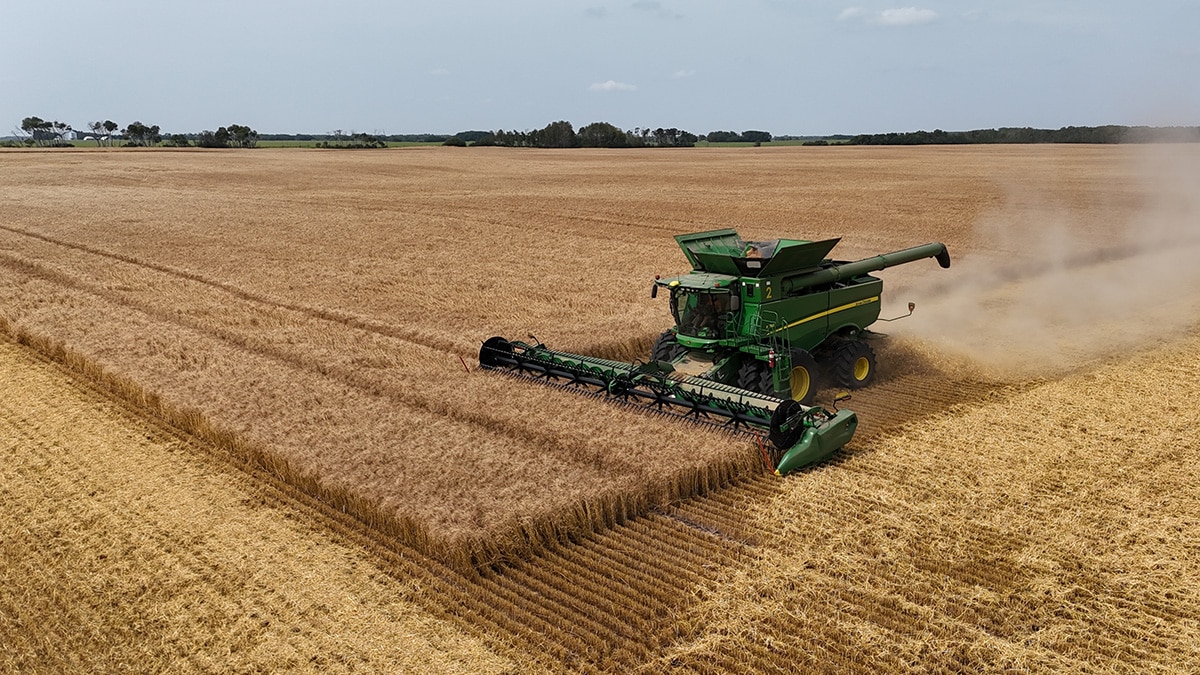News
September 13, 2024
Winter wheat adds diversity and risk management to crop mix
Plant before the end of September to maximize options

Cam Greig likes winter wheat for a number of reasons, especially when Mother Nature threatens the entire crop year with uncooperative conditions during spring seeding.
“I remember in 2011, 2013 and 2014, we weren’t able to spring seed an acre or could only seed a portion of our acres,” says the third generation farmer from Reston, Manitoba. “Winter wheat was a very useful management tool. We needed a crop to use the moisture so we went full into winter wheat.”
Greig is co-owner in Avondale Seed Farm, a family-operated business that’s provided pedigree seed to Manitoba farmers since the 1970s. He’s grown winter wheat “for as long as I can remember” and recommends the crop to customers for three reasons.
We view winter wheat as a way to diversify our crop rotation, maximize our equipment and manage risk.
Jake Ayre also calls winter wheat a triple win. “For all farms, it is a very profitable crop. And it’s good agronomically. And it’s good environmentally, increasing the farm’s bio-diversity,” says the co-owner of Southern Seed Ltd. near Minto, Manitoba.
Sown in the fall following the harvest of spring crops, winter wheat does present a change-up to the usual farm routine. Manitoba Agriculture recommends seeding into canola stubble to ensure the crop endures the winter months, although barley, oat and pea stubble are also suitable.
“We noticed on our farm that desiccation of canola was taking a long time,” says Ayre. “So instead of desiccating and straight-cutting our canola, we went back to swathing. We were better able to control the amount of stubble we were leaving for the winter wheat.”
Greig says farmers who already cash-crop wheat, canola or oats will find winter wheat an easy addition because no extra specialized equipment is needed. And winter wheat can benefit soil health and the vitality of spring crops.
We’ve seen the benefits to breaking up disease cycles simply by throwing extra crops in the rotation. Canola is an obvious example. The tighter it gets in the rotation, the more the yield goes down. Anything we can add into our crop rotation puts us money-ahead.
Greig suggests planting before September 25 to be eligible for 100 percent coverage through Manitoba Agricultural Services Corporation. Winter wheat sown from September 26 to 30 is eligible for 80 percent coverage. He also says planting before the insurance window closes will give the crop sufficient time to develop before the snow flies.
“It’s really crucial to get the winter wheat stand to the three or four leaf stage so you have good winter survival,” Greig says.
He also cautions farmers not to panic in the spring when the fledgling crop emerges from the snowpack. “Sometimes, things don’t look as good as the fall. Even crop insurance suggests that you don’t assess the winter crop until you’re halfway through spring seeding. I think that’s a good rule.”
As a seed retailer, Greig believes yield and profitability are the main reasons why farmers grow winter wheat. This year, his customers are reporting winter wheat yields in the 70 to 80 bushel/acre range, while spring wheat is returning 60 to 70 bushels.
“For someone who has never grown winter wheat, or maybe hasn’t tried it for five or 10 years, I would recommend they try a quarter of winter wheat,” says Greig. “It’s come a long way since the early varieties, especially for winter hardiness and survivability.”
Listen to a DUC podcast about winter wheat here https://www.buzzsprout.com/2288579 or wherever you find your podcasts.
